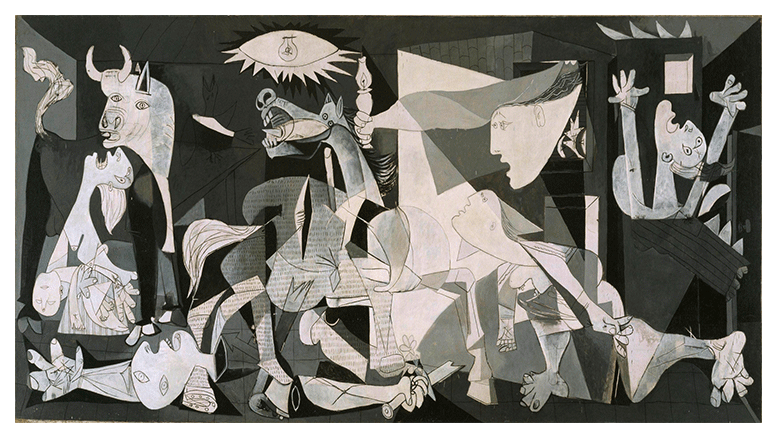Fundamentally, painting has never been a mirror of the external world, nor has it ever been similar to photography; it has been a creation of signs, which were always read correctly by contemporaries. The Cubists created unquestionably new symbols, making it difficult to read their paintings.
Daniel-Henry Kahnweiler
Cubism has many characteristics. A Cubist painting is a style of art in which the subject matter appears in multiple geometric forms. Yet it is far more than that.
Philosophically, Cubist art describes pictorial democracy, where the aesthetic value of every element is equal. From an intellectual standpoint, the movement acknowledges the complexity of life and the need to view it from various perspectives. Metaphorically, Cubism is the internet, a tool for exploring a subject deeply, not to get a superficial image of what it is, but rather to understand its essence and arrive at a complete vision.
As Jacques Lipchitz, an American-French Cubist, quoted: Cubism is like standing at a certain point on a mountain and looking around. If you go higher, things will look different; if you go lower, once again, it will look different. It is a point of view.
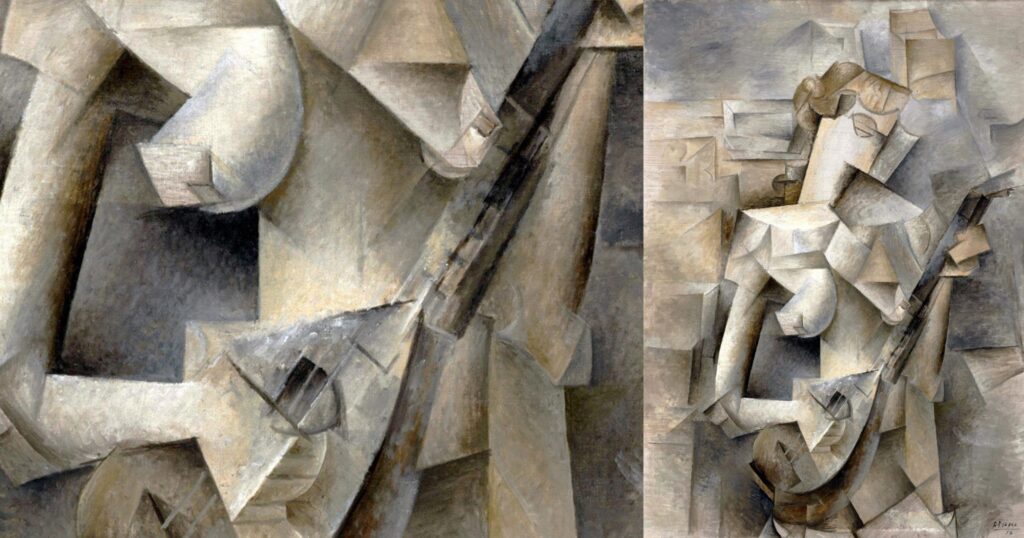
CUBISM AND ITS ORIGINS
Pablo Picasso and Georges Braque, the two renowned pioneers, met in Paris in 1907 when Braque visited Picasso’s studio. As a result of that encounter, a special friendship in art history was born. Their partnership created Cubism art, a revolution in painting that transformed the world into geometric shapes.
In the future, Braque would describe his friendship and working relationship with Picasso as “the things that Picasso and I said to one another during those years will never converse again because if they were, no one would understand them anymore. It was like being roped together on a mountain.”
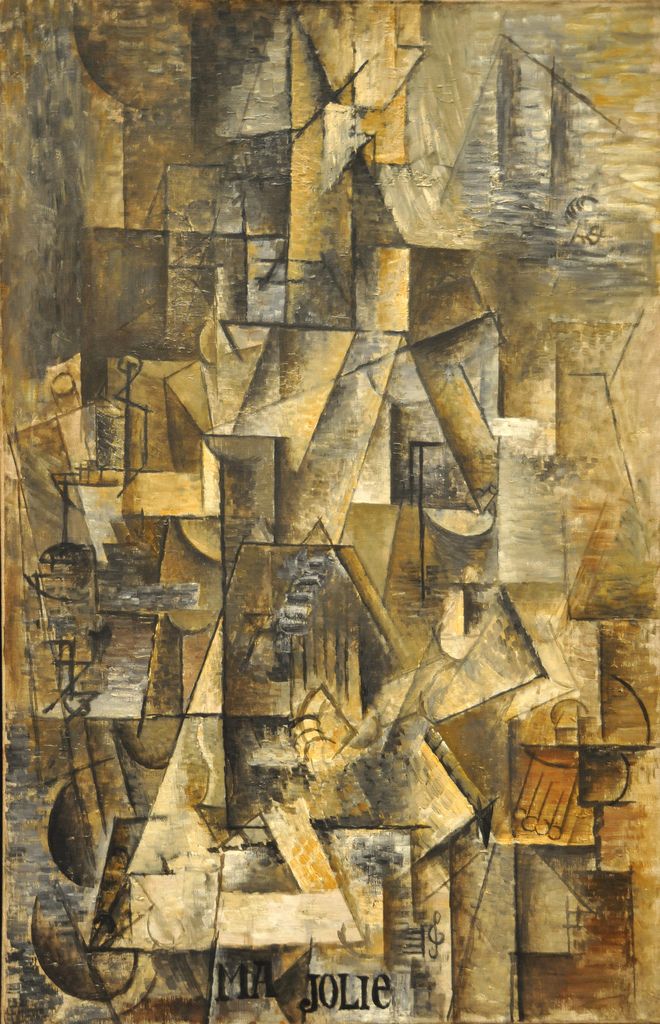

The Cubist movement was born out of the experiments of Pablo Picasso and Georges Braque in the wake of Picasso’s 1907 painting, Les Demoiselles d’Avignon. Drawing their cue from Paul Cézanne, these artists used multiple vantage points to fracture images into geometric forms. In contrast to modelled forms in illusionistic space, figures served as dynamic arrangements of planes and volumes in which background and foreground intertwined. As one of the most groundbreaking movements of the early twentieth century, it challenged Renaissance depictions of space, resulting in non-representational experiments by many different artists.
Artists working in the Cubist style began incorporating collage and popular culture into their paintings and experimented with sculpture. During the same period, Louis Vauxcelles coined the term Cubism after seeing the landscapes Georges Braque painted in imitation of Paul Cézanne. Little cubes, Vauxcelles called the geometric forms in his highly abstracted paintings. The term originated as irony, but by 1911, Cubism applied to the exciting abstract style that the art community came to embrace. Picasso and Braque were prone to creating still lifes of musical instruments, bottles, pitchers, glasses, newspapers, playing cards, and human figures during the Cubist era.
CUBISM PHASES – PROTO, ANALYTIC, AND SYNTHETIC
Proto-Cubism began in 1906. In contrast to the preceding Fauvist and post-Impressionist movements, this period represents the earliest manifestations of Cubism, in which experiments and influences produced geometric shapes and muted colour palettes.
Analytic Cubism seemed to run from 1908 to 1912. The work displayed deconstructed representations of objects with contradictory shadows and planes, challenging the then-traditional notions of perspective. The art pieces had muted shades of black, grey, and ochre, as the simplified colour palette minimised distractions from the image at the centre of the canvas. But the colour palette also adhered to the Proto-Cubism style. Several historians have argued that such innovations emerged in response to how people experienced space, movement, and time in the modern world.
Synthetic Cubism is the later phase of Cubism between 1912 and 1914, characterised by simpler forms and brighter colours. The preceding period of Analytic Cubism focused on fragmenting objects, while Synthetic Cubism experimented with textures and flattened perspectives. The artists also experimented with using mundane materials to express abstract ideas. For example, the use of newspapers in their art led later historians to argue that, instead of being concerned with the form above all else, the artists were also aware of current events, such as World War I. The use of tangible objects was a crucial part of the development of modern art, which worked with formerly existing, prefabricated objects.
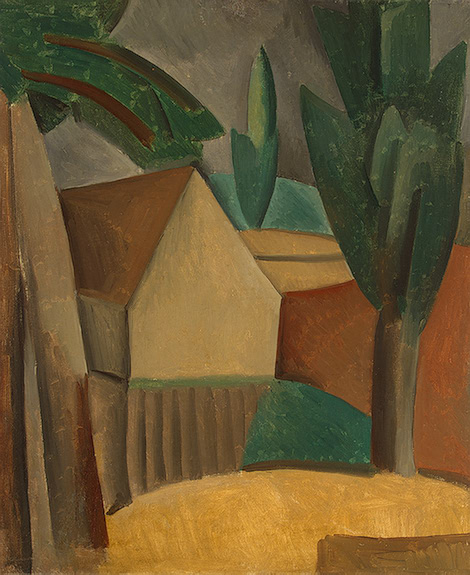
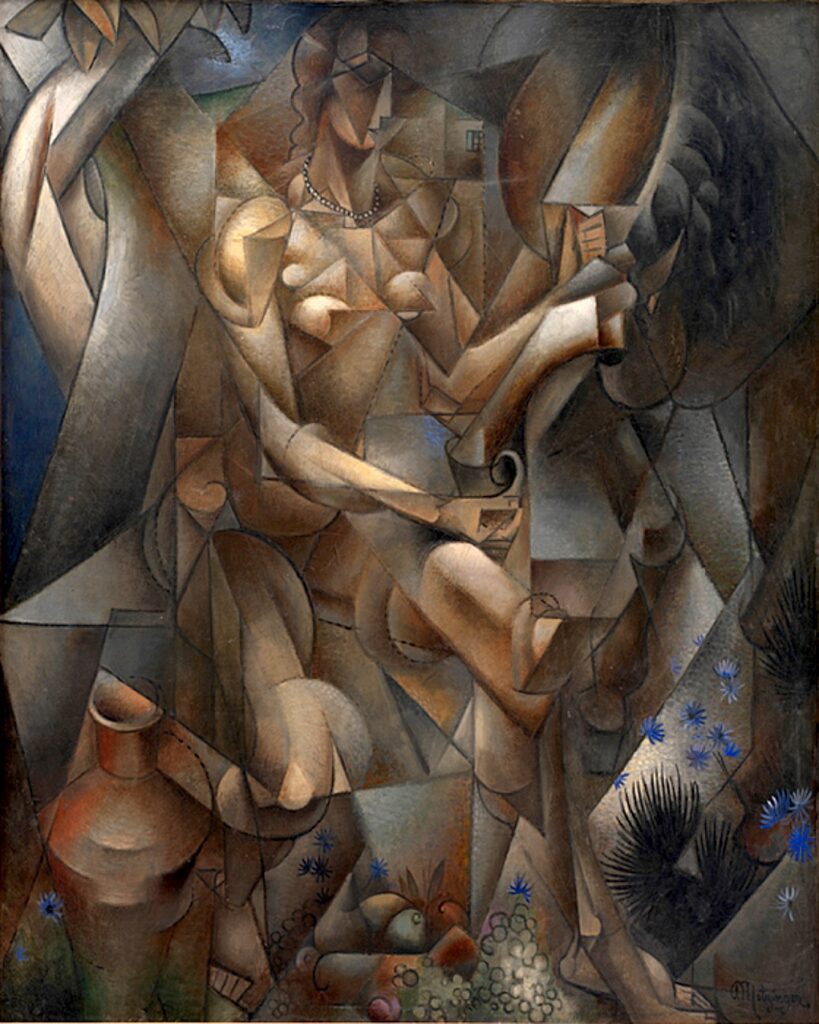
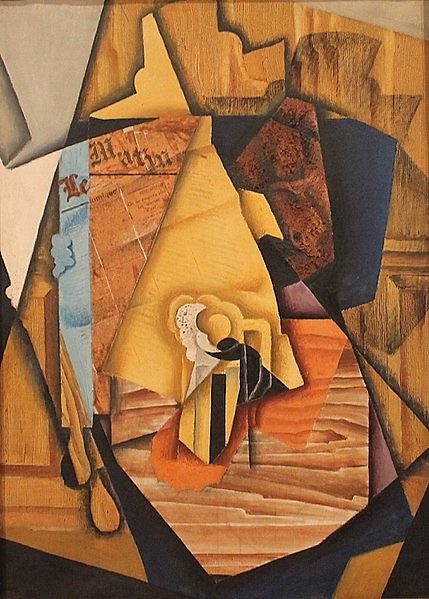
ICONIC CUBIST ART AND ITS ARTISTS
Check it out!
LES DEMOISELLES D’AVIGNON BY PABLO PICASSO, 1907
Pablo Picasso was a Spanish painter, printmaker, sculptor, and ceramicist whose work influenced the art of the 20th century. Together with Georges Braque, he founded the Cubism movement in the early 1900s. However, he also contributed to other styles such as Expressionism and Surrealism. His work featured angular shapes and challenged preconceived notions.
Les Demoiselles d’Avignon depicts five nude women in a Barcelona brothel. With this masterpiece, Picasso reinvented Western painting during the period when modernism was sweeping Europe. The composition consists of muted, panelled block colours. Each female figure faces the viewer with disconcerting facial expressions; their features draw inspiration from Iberian sculpture and African masks. Their bodies are angular and disjointed as if posing for the viewer. It appears that the primary purpose of Les Demoiselles d’Avignon was to challenge viewers’ conventional assumptions. Massive intrusive nudes, the lack of perspective, the disjointed grouping, the juxtaposition of regular faces with masked faces, and the fact that all five women seem detained in succession contribute to the picture’s kaleidoscopic chaos and sense of pictorial anarchy.
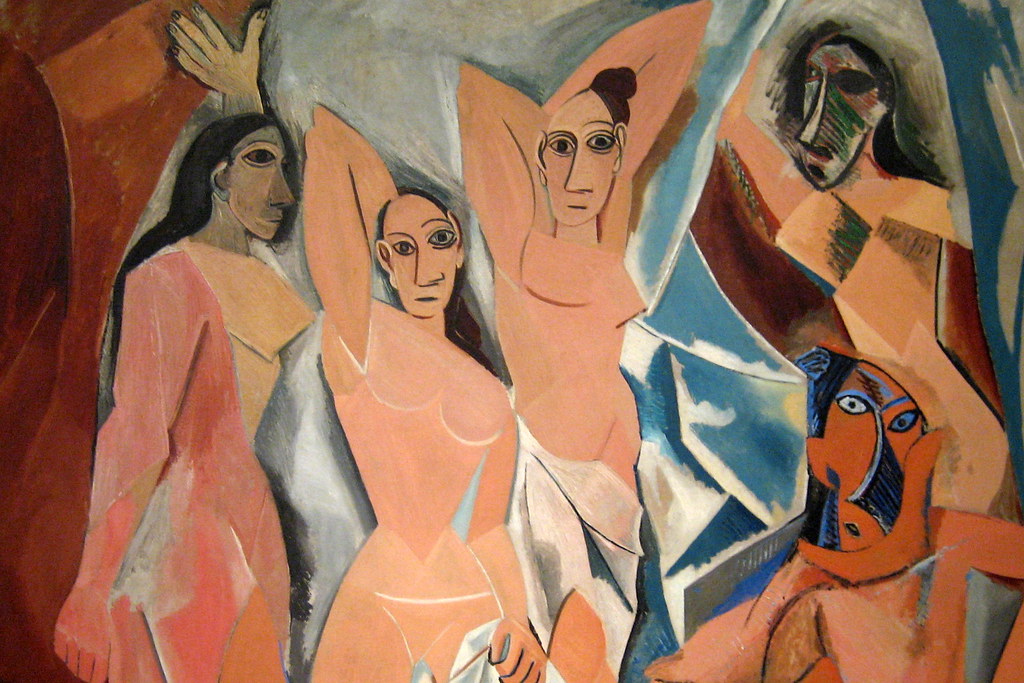
The painting was a revolutionary act against Renaissance art, whose rules of perspective, shading, colour, and composition broke down to introduce new modes of representation. In this piece, Cubism diverges from traditional aesthetics in one of the most renowned ways.
HOUSES AT L’ESTAQUE BY GEORGES BRAQUE, 1908
The French artist Georges Braque was a painter, printmaker, draughtsman, and sculptor involved in the Fauvist and Cubist movements. Although his style and colour choices varied throughout his career, he remained loyal to the Cubist movement. Bold colouration and precise angles characterise his most famous works.
Houses at L’Estaque illustrate the transition from post-Impressionism to Proto-Cubism. The viewer can see the influence of Paul Cézanne in the uniform brushstrokes and thick paint application. However, Braque incorporated cubist elements by removing the horizon line and playing with perspective. The houses appear fragmented with inconsistent shadows due to a background that blends seamlessly with the objects.

VIOLIN AND CANDLESTICK BY GEORGES BRAQUE, 1910
This painting represents a still life of a violin and a candle. Here, a grid of deconstructed elements creates a single composition, allowing the viewer to draw their interpretation of the art piece. A muted colour palette of brown, grey, and black sets the tone for the artwork, characterised by juxtaposing shadows and a flattened perspective. The painting predominantly consists of horizontal, flat brushstrokes with sharp outlines.
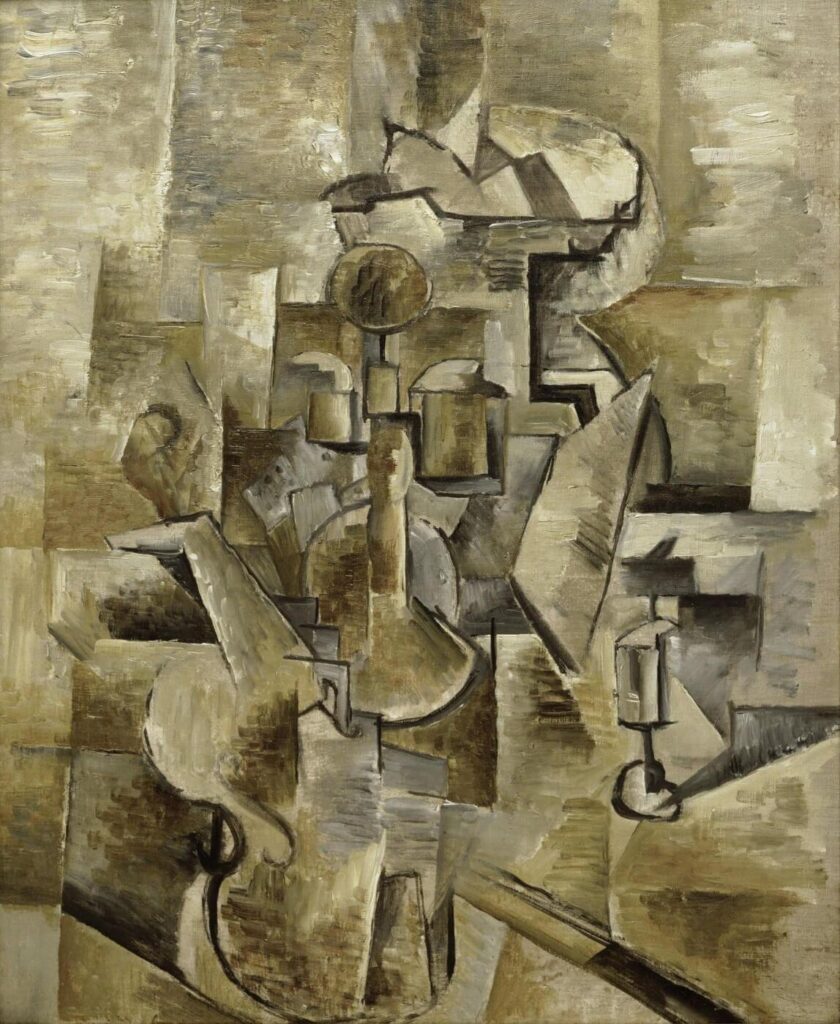
I AND THE VILLAGE BY MARC CHAGALL, 1911
Marc Chagall was a Russian-French artist skilled in dream iconography and evocative expression. The imagery of his work was pre-surrealist, and he used more poetic, personal associations than conventional artistic representations. As part of his career, he used different media and learned stained glass from a stained-glass maker, which led him to take the craft seriously.
His autobiographical piece, “I and the Village,” focuses on his childhood in Russia. The portrait captures a surreal and dreamy setting with symbols and elements from the town of Vitebsk, where Chagall grew up. Thus, the piece has a profound emotional impact and refers to several significant memories for the artist. With its intersecting geometric panels and blended colours, the artwork confuses the viewer and disorients them.
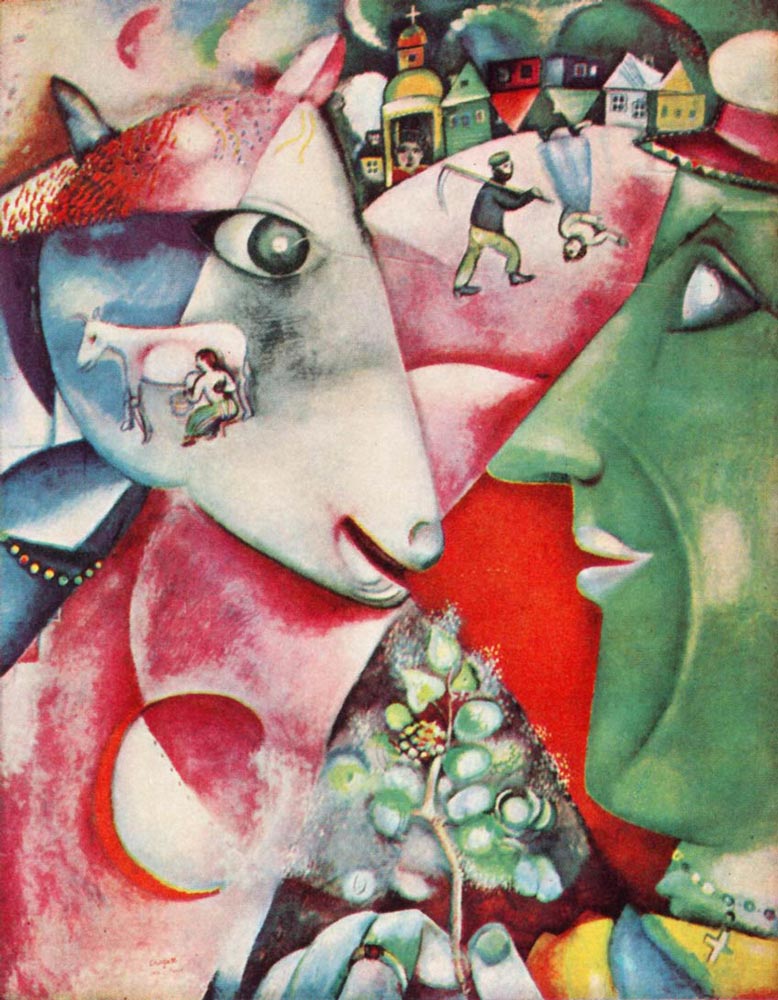
TEA TIME BY JEAN METZINGER, 1911
Jean Metzinger was a French painter and writer who, with his fellow artist Albert Gleizes, wrote the primary theoretical work on Cubism. During the early 1900s, when he was working in the Fauvist and Divisionist styles, he incorporated some of their elements into his cubist works, such as bold colours and defined lines. He was also influenced by Pablo Picasso and Georges Braque when he moved to Paris to pursue a career as an artist.
Tea Time exhibits Metzinger’s integration of classical art with modernism. The painting shows a woman having tea in a typical Cubist composition. This portrait features elements of distortion and an abstracted figure, similar to classical and Renaissance bust portraits. The body of the woman and the teacup are both deconstructed, emphasising shadow, light, and perspective. It has a muted colour scheme with elements of green and red.
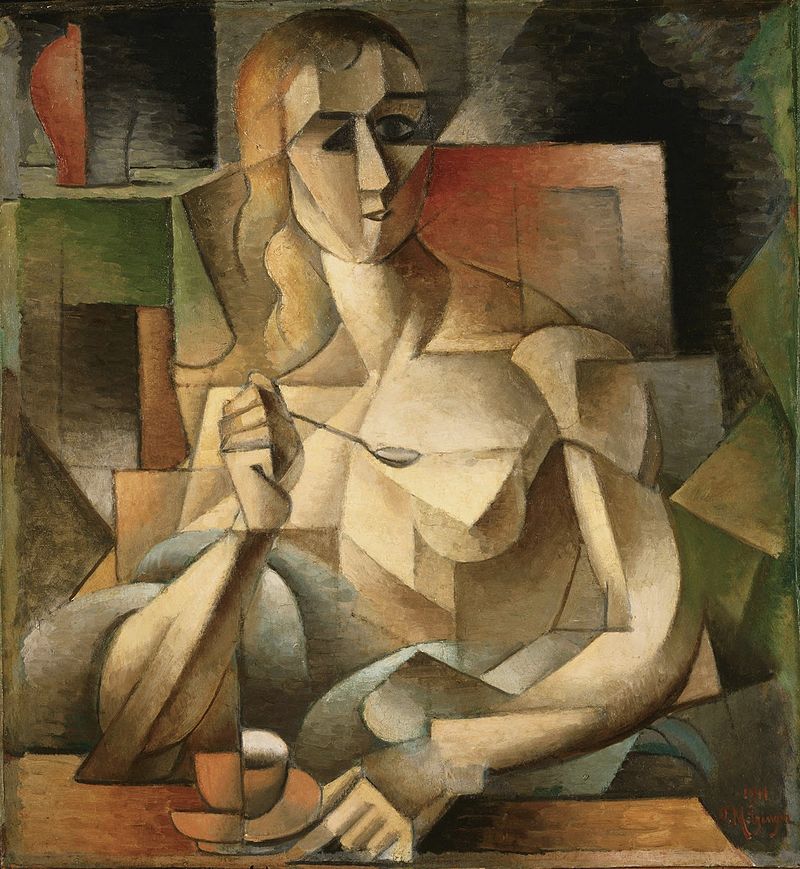
CUBISM PORTRAIT OF PABLO PICASSO BY JUAN GRIS, 1912
Juan Gris was a Spanish painter and a leading figure in the Cubist movement. In Paris, he worked alongside Pablo Picasso, Georges Braque, and Henri Matisse as part of the 20th-century avant-garde. Additionally, he designed ballet sets for the art critic and founder of the Ballets Russes, Sergei Diaghilev. His trademarks were vivid colours, angular forms, and a reinterpretation of spatial perspective.
Portrait of Pablo Picasso shows Gris’ homage to his artistic mentor. With its spatial deconstruction and paradoxical angles, this piece is reminiscent of Analytic Cubism. But it also features a more structured geometric composition, with distinct colour planes and pops of colour. The face of Picasso blends into the background, flattening the piece.

CUBISM GUITAR BY PABLO PICASSO, 1913
Guitar speaks to the perfect transition between Analytical Cubism and Synthetic Cubism. It consists of a collage and drawn elements made from paper and newspaper clippings, adding depth and texture to the piece. The painting depicts disjointed and asymmetrical parts of a guitar, recognisable only by the central circle and shape. A bright blue background emphasises the bold colours of Synthetic Cubism, contrasting its mainly beige, black, and white colour scheme.

CUBISM SELF-PORTRAIT BY SALVADOR DALI, 1926
Salvador Dalí was a Spanish Surrealist artist. He remains one of the most prominent contributors to the movement, and his work is among the most notable and recognisable. His art is distinguished by its accuracy and focus on dreamlike and bizarre imagery. Despite being primarily interested in Surrealism, Dalí contributed significantly to the Dadaist and Cubist movements during the first half of the 20th century.
Cubist Self-Portrait exemplifies the work created in his cubist phase between 1922 and 1928. His cubist works drew inspiration from the art of Pablo Picasso and Georges Braque, and the artist also experimented with other influences. And his self-portrait exemplifies these combined elements. The piece is centred on an African mask, surrounded by collage elements typical of Synthetic Cubism and colored in a muted palette characteristic of Analytical Cubism.
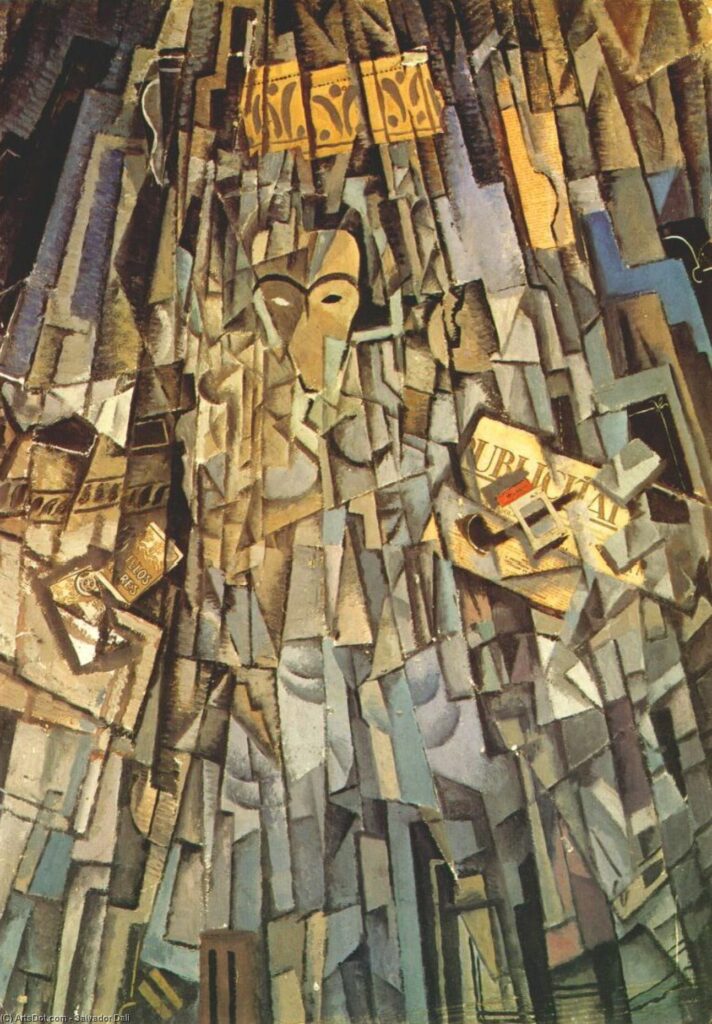
GUERNICA BY PABLO PICASSO, 1937
Guernica ranks as one of the most notable anti-war masterpieces in modern history. The art piece responds to the 1937 bombing of Guernica, a Basque town in northern Spain, by Fascist Italian and Nazi German forces. The political artwork shows animals and people suffering from wartime violence, many of whom lost limbs. Monochrome colours are used, along with thin outlines and geometric block shapes, to enhance the mood of the artwork.


